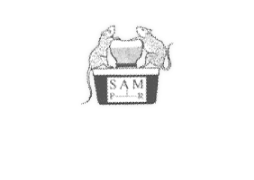Establishment
Establishment of SAM Council
In 1968, several pairs of the AKR/J strain of mice were donated by Jackson Laboratories (Bar Harber, ME, USA) to the Department of Pathology, Chest Disease Research Institute, Kyoto University. With these mice as a basis, Dr. Toshio Takeda and his colleagues began to develop a model for senescence. By 1981, they had developed a new model of senescence termed the Senescence-Accelerated Mouse (SAM) and published the first report on the SAM, Mech Ageing Dev 17: 183-194, 1981. Investigators interested in the SAM model began to increase and the supply of breeding pairs of SAM mice to investigators who wanted to use them started in 1982. In such a situation, experimental results on the SAM model accumulated gradually and there was a growing tendency among the SAM investigators to seek chances to meet and discuss the results. Thus, a council “The Council for SAM Research” was founded and the first meeting on the SAM model was held at Kyoto University in 1984. Thereafter, meetings organized by the Council have been held annually.
Worldwide distribution of the SAM model and the annual meetings organized by the Council promoted SAM research quantitatively and qualitatively. The First International Conference on Senescence: The SAM Model was held in Kyoto under the auspices of the Council in 1994. In collaboration with NIH, the Council organized the Kyoto Course on Animal Models for Aging Research in 1995. The Second International Conference on Senescence: The SAM Model was held in Sapporo in 2003.
Since the foundation of the Council, the Council has been managed as a voluntary organization. The Council decided to reform the management structure to make it more systematic and efficient in 1997. Since then, the Council has been managed according to regulations newly enacted in Japan; according to the new rules, for example, each investigator using SAM in Japan has become a member of the Council. More detailed achievements of the Council are listed below.

